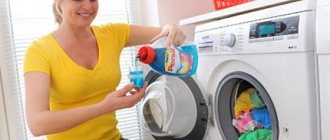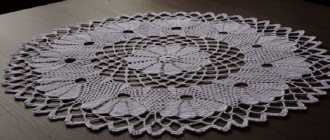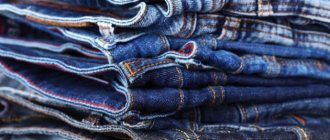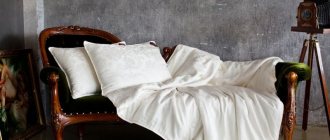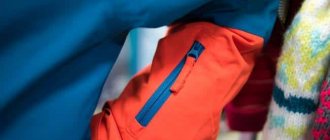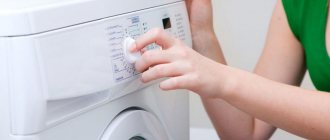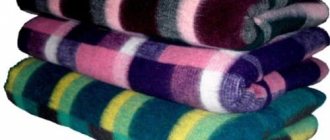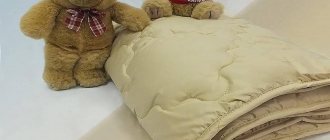Boric acid is used to bleach wool, silk, cotton, linen, as well as natural fabrics mixed with synthetics. The product is suitable for removing gray and yellowness from baby clothes, diapers, lace underwear, curtains and tulle. Boric acid destroys fungus and mold, has a disinfectant effect, and also softens water. With its help, you can even out the color of a faded item and refresh the color of colored fabric.
Boric acid powder will help remove fresh and old stains on upholstered furniture and car covers, and get rid of unpleasant odors in shoes.
You can also use boric acid to clean kettles, frying pans, pots and neutralize unpleasant odors in the house.
The product is suitable for the following purposes:
Whitening:
- yellowed things;
- removing grayness from things.
Removing paint:
- oil;
- gouaches;
- watercolors;
- acrylic.
Cleaning food stains:
- coffee and tea;
- chocolate;
- wine and juice.
Removal of biological materials:
- urine;
- feces;
- blood;
- vomiting.
Cleaning kitchen utensils:
- teapots;
- pots;
- frying pans
Cleaning from contaminants:
- resin;
- rust.
Odor removal:
- cigarettes;
- gasoline;
- sweat;
- urine;
- staleness and old age;
- from shoes.
Cleaning traces of persistent stains from paints, resins, rust from light-colored fabrics
- Composition of the product: 100 milliliters of water, 50 milliliters of vinegar, 25 milliliters of a liquid solution of boric acid 3%, 25 milliliters of hydrogen peroxide 3%.
- Step-by-step instructions: first try to mechanically remove or clean off the contamination. After this, add vinegar, boric acid and peroxide to the water. Heat the resulting mixture to a temperature of 50-70 degrees. Apply the resulting mixture to the areas to be cleaned using a stiff brush for 20 minutes. Rinse off the mixture and wash the item. The procedure can be repeated after 2 weeks.
How to use for whitening?
There are 5 ways to use the product:
- Soak. Allows you to soften dirt so that it is easier to remove when washing. For a whitening effect, dissolve 1–2 tbsp in 2 liters of water (hot). spoons of boric acid. Things are placed in the solution and left for 2 hours.
- Removing fresh stains. If fruit juice, blood or coffee accidentally spills on white linen, sprinkle the area with boron powder crystals and add a few drops of water. Then rub the stain lightly with a brush and wait until the product dries completely. Then the procedure can be repeated, and if the laundry is clean, rinse it in water or brush off the white dust (in case washing is impossible). Liquid boric acid can be dropped onto a cotton swab and applied as a compress to the area of contamination.
- Odor removal and whitening. To remove urine stains and mold from white linen, dissolve 10 g of boric acid in 2 liters of hot water and add 0.5 cups of vinegar. Things are placed in the solution for an hour. Then wash and dry.
- Removing old stains. Dissolve 5 tbsp in 2 liters of hot water. spoons of ammonia and boric alcohol. Place the laundry there and, stirring occasionally, keep until the water cools completely. Then wash with powder.
- Use in washing machine. When washing white laundry, add 0.5 cups of boric acid to the laundry detergent. Wash at 60–90 degrees. This method will help remove yellowness.
Boric acid effectively removes yellowing of white fabric, marks from fruits, coffee, sweat, and fat.
Whitening socks, knee socks, children's tights
To make your socks and tights snow-white again, you need to do the following:
- Wash items with soap.
- Fill clean socks and tights with hot water with the addition of 2 tbsp. spoons of boric acid.
- Leave on for 30 minutes and then scrub lightly with a brush.
- Rinse in hot water.
We recommend: How to choose the right bath cleaning products?
Bleaching underwear and tulle
Products of this type require careful care. And delicate boric acid is ideal for whitening them.
Instructions:
- Fill a bowl with slightly warm water.
- Dilute boric alcohol in it at the rate of 2 tbsp. spoons per 1 liter.
- Soak tulle or cotton underwear for 3 hours.
- Wash as usual.
Whitening bed linen and towels
The product shows the greatest activity in hot water. To bleach bed linen and towels, it is recommended to use boiling:
- Fill a large saucepan with 5–7 liters of water.
- Add 5 tbsp. spoons of washing powder and boric acid.
- Place linen and towels inside.
- Place the pan on the fire and bring to a boil.
- Continue boiling the laundry for 30 minutes.
- Leave in the pan until cool.
- Rinse thoroughly.
Refreshing and evening out the color of items made from plain fabrics
- Ingredients: 10 grams of boric acid, 1-2 tablespoons of washing powder.
- Step-by-step instructions: pour boric acid mixed with washing powder into the powder compartment of the washing machine, which will be required in 2 times less than the usual amount. Place laundry made from plain fabrics into the drum. Wash items as usual. The composition softens water, refreshes and evens out the color of fabrics.
Did you like our methods for bleaching and removing stains from fabrics using boric acid?
Not really
Reviews
Boric acid as a bleach has mixed reviews. There are approximately the same number of positive and negative reviews. The people's opinion was divided in half. Some praise its whitening properties and use it for a long time. Others are disappointed with the effect and are more inclined to use modern household chemicals - industrial bleaches and stain removers, which work for sure.
We recommend: 5 best DIY fragrances for a fragrant home
Fabric bleach at home - ready-made products
Using ready-made bleaching products will reduce your time preparing traditional methods. You can achieve dazzling whiteness by:
- stain remover "Sarma Active 5 in 1". Fights both stubborn stains and fresh ones;
- stain remover "Vanish OXI Action". Perfectly fights against fresh stains, gives white things whiteness;
- Amway PreWash Spray stain remover. Removes fresh stains on white, but does not cope well with yellowness;
- stain remover pencil “Faberlic (Edelstar)”. Removes stains point by point; there is no need to completely wash the item in soapy water;
- powder "Eared Nyan". Will cope with any dirt, but will not give dazzling whiteness;
- Beau Plus Maximum bleach. Budget powder with whitening effect. Removes stains of various natures and adds whiteness.
Instructions for using ready-made products are written on the packaging.
Whitening clothes at home is the best way
Among the many effective ways to whiten clothes, the best method among housewives is considered to be boiling, with the addition of peroxide and ammonia. For the cleaning process you will need:
- ten-liter saucepan;
- 9 liters of water;
- 50 milliliters of hydrogen peroxide (3%);
- 20 milliliters of ammonia.
Heavily washed and yellowed laundry can be bleached as follows. Place the bedding in boiling water. Boil for 30 minutes. Add half a bottle of three percent peroxide and ammonia directly to the bubbling water. The product must be constantly covered with the solution, so as the water evaporates, you need to add it. After boiling, allow the laundry to cool. Hand wash and rinse. Dry naturally.
How to whiten white things at home - folk remedies
Whitening products depend on the item you want to restore its whiteness. Particular attention should be paid to:
- Lace and regular underwear. You need to wash yellowish underwear by hand and in warm water so as not to damage the thin fabric. The best whitening agent is hydrogen peroxide. You cannot boil the product; the fibers will lose their structure and you will simply throw away the laundry.
- Items that were accidentally dyed during general washing. Antilin detergent will help whiten items made of synthetic fabric; for natural materials, you can use boiling in a solution of water and hydrogen peroxide (dissolve 2 tablespoons of peroxide in 5 liters of water, boil the item for 30 minutes).
- Clothes made from polyester. Most modern things are made from synthetic fabric, so it’s worth remembering that:
- it cannot be bleached at high temperatures;
- Do not use products containing chlorine;
- Dry after bleaching in a washing machine.
- Bleaching things with colored prints is the most difficult case for a housewife. It is impossible to completely soak things. Therefore, apply any of the available stain removers or ordinary laundry soap to the contaminated areas, and leave to soak for a couple of hours. Then carefully wash the item.
For all other things in your wardrobe, such as white T-shirts, trousers, blouses, use folk remedies that our grandmothers used.
Hydrogen peroxide and soda
Using a mixture based on three percent hydrogen peroxide and soda will get rid of stains and yellowness. Dissolve 200 milliliters of three percent peroxide and 50 grams of baking soda in 5 liters of warm water. Place clothes in the solution and soak for 12 hours. Then wash with laundry soap.
Aspirin
Every medicine cabinet contains aspirin. It will save you not only from headaches and fever, but also from yellowed things. Carrying out the whitening procedure: dissolve 7 tablets of aspirin crushed into powder in 5 liters of warm water (50°C). Dip white items into the resulting solution and leave for 10 hours. After soaking, wash in soapy water.
Lemon acid
Using citric acid will whiten clothes from yellowness, and also give them freshness and softness. Acid cleaning involves soaking items in a soapy acid solution for a couple of hours. The mixture is prepared using 5 liters of water (50°C), 20 grams of powder, 20 grams of citric acid. After soaking, wash the product in the machine, selecting the normal washing cycle.
Sunflower oil
It's hard to believe, but you can remove yellowness from white things with the help of sunflower oil. It is recommended to bleach waffle kitchen towels. Boil five liters of water. Pour 10 milliliters of vegetable oil into boiling water, add 10 grams of bleach, 50 grams of washing powder. Mix all components until completely combined. Dip dirty clothes into the resulting solution and leave for three hours. Then wash by hand or machine. If the stains are not removed, repeat the procedure.
Soda and vinegar
A mixture based on soda and vinegar will allow you to remove stubborn stains from wine, juice, and sauce on white things. Cover the area of contamination tightly with a layer of baking soda, followed by 9% vinegar. To remove the stain faster, scrub it with a brush or sponge, moving in one direction. Leave the product in this state for several hours, then wash and dry in the sun.
Important! You cannot use baking soda and vinegar to remove stains on silk, wool or dyed fabric.
Trusted salt
Regular table salt will help save things from yellowing. Sodium chlorine is used in bleaching both synthetic and natural fabrics. Prepare a soaking solution based on 100 grams of salt and a liter of water at a temperature of 50°C. Soak the fabric item for an hour, then wash it with laundry soap. The yellowness should disappear.
Potassium permanganate and laundry soap
Potassium permanganate crystals and laundry soap together are a good bleach for clothes. Wash whites or linens. Then grate a bar of laundry soap and add it to a ten-liter bucket of boiling water. At the same time, prepare a liter jar of a one percent solution based on potassium permanganate. Pour potassium permanganate into the soap solution and stir. Dip things into the resulting solution and leave for six hours, covering the bucket with a lid so that the water maintains its temperature longer. When the solution has cooled completely, rinse your clothes or linen and wash them in a machine.
Mustard
Mustard powder will save your kitchen towels and napkins from yellowing. Mustard has disinfectant properties and removes greasy stains. Dissolve five tablespoons of mustard powder in five liters of boiling water. Leave the resulting mixture to sit for three hours. Strain the solution through cheesecloth. Place the items in a basin and fill with the strained mustard mixture. If the stains are minor, soak for 20-30 minutes. Then wash the fabric items in a soapy solution made from laundry soap, rinse and dry.
Soda and laundry soap
Baking soda and laundry soap will help get rid of yellowness or grayness on things made from natural fabrics. Heat five liters of water to 40°C. Dissolve half a glass of soda and 50 grams of laundry soap in it, after grating it. Bring the solution to a homogeneous consistency and heat it again to 40°C. Dip the items into the resulting mixture and leave them to soak for 5 hours. Then wash in the washing machine.
